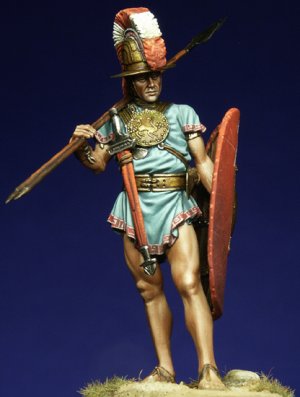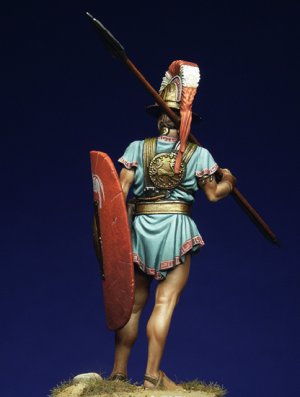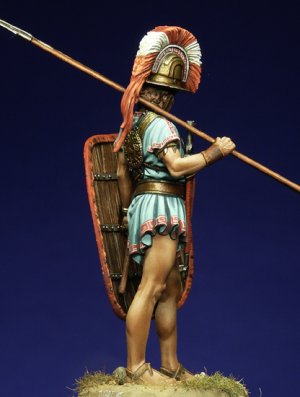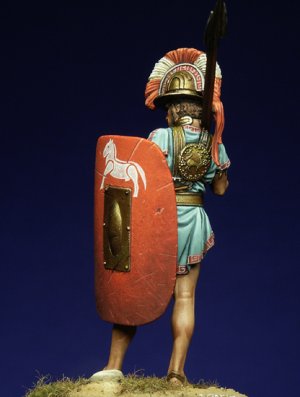







Ref.: ROME-54076

Italian Warrior IV C. b.C. The idea for the realisation of this figurine comes from the statue of the “warrior of Capestrano” which was found in Abbruzzo ( L’Aquila ) and is now kept in the National Archaeological Museum of Chieti. The armour is typical of the italic warriors living in the Apennines area. The Oscan-Sabellas language as well as the Sannitic language were common to these populations that historically had to withstand the Roman expansion between the VI and the III century b.C. The chest is protected by the kardiophylax (literally hart protector) a bronze disc (front and back) often showing an episema which is the mythogical representation of a doubled protome animal. The anchoring system is made out of both bronze and leather straps, with an odd support for the cross hilted sword, which has the shape of a lengthened willow leaf, whose sheath is also equipped with a scabbard for a dagger. An extra weapon could sometime be the straight axe slipped through the belt and mainly used as a sign of distinction for leaders. The abdomen is partially protected by a belt made out of bronze. The figurine wears a collar (turquis) which is also made out of bronze. The helmet is made out of bronze and is embellished by a multi coloured horsehair crest. The shield which could vary in shapes was made out of wood laminated with leather and often painted. The bronze umbo at a later date was made out of iron. Other typical weapons were, the javelin (pila) used during the initial skirmishes when the enemy was still distant, and the lance (hasta) used for close combat prior to utilize the dagger (or the sword). The boots are in leather. The tunic tightened at the waist by the belt is in pastel whitish colour or brown or red. Decorations of the rims could be painted in Greek fashion or in any other geometrical pattern.